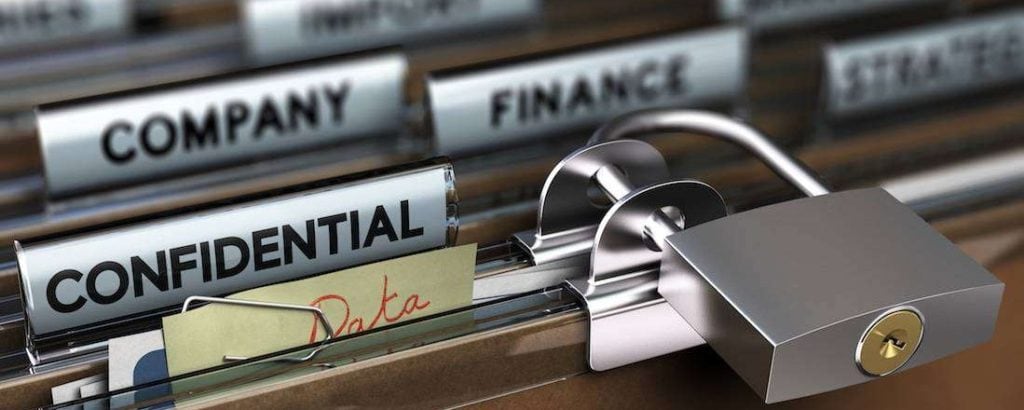Employees working from home can put businesses at a greater risk of a security breach. While some businesses have a good enough physical information policies and network security systems in place, many are not aware of the increased risks involved in working remotely.
In this piece we will cover:
- 3 major remote work information security challenges
- 5 tips to keep business information secure while working remotely
3 major remote work information security challenges
There are three challenging areas that might require attention while employees work remotely. They are that:
- More security responsibility shifts to individual employees
- People are more susceptible to Human Error and Scams
- Security concerns and protocols are not the same
Let’s look at these challenges in more detail:
1. More security responsibility shifts to individual employees
The idea that “security is everyone’s responsibility” circulates across business, government, education, and other types of organizations. “Security is everyone’s responsibility” might be the ideal goal, but it is rarely the everyday reality.
With many people now working remotely from a home office – which might be a kitchen table, a living room couch, or wherever they can get work done – security responsibility has shifted more to the individual, even though the individual might not realize it.
In the office, employees are protected by a corporate security bubble – businesses invest heavily to ensure that the right solutions, such as network security and an office shredding program, are in place to protect data and keep threats on the outside. At home, corporate devices still carry a level of protection, but the risks to physical and electronic documents are heightened by the environment
2. People are more susceptible to Human Error and Scams
Human error is a constant, but it’s more likely to occur in this time when nearly everyone’s daily routines are disrupted in some way. Remote work can be enormously productive, yet the formula for work-from-home success has had a bunch of new variables added to it.
There are plenty of distractions when working from home right now: children, deliveries, a sunny patio, or a walk at lunchtime. The bad guys know this and are looking for remote workers on their home network. This is why COVID-19-related phishing scams and other attacks are prevalent.
Employees must also be vigilant with how they are disposing of any physical documents. Simply placing printed paper into the recycling bin can result in a significant security breach.
3. Security concerns and protocols are not the same
One of the biggest challenges is that “normal” is not really a tangible concept at the moment. Even organizations with strong security programs and policies are struggling.
Employees are likely asking questions like:
- How do I keep my confidential work information private when I’m working at the kitchen table?
- What do I do with the paper documents, hard drives and USB sticks I need for work?
- How do I securely destroy confidential documents when they’re no longer needed?
Organizations must educate their employees about their workplace policies more than ever and provide them the answers they need in order to keep information secure.
5 Tips to keep Business Information Secure while working remotely
Now that we understand the increased risks associated with working remotely, what can we do to mitigate this risk?
Here are some tips to keep business information secure while working remotely
- Enable online platforms for people to work in
- Store and destroy confidential information properly
- Treat the home workspace as if it is a physical office location
- Make the home office more cyber secure
- Expect (and support) a period of adjustment
Let’s look at these in further detail:
Tip #1 – Enable online platforms for people work in
At the center of a remote working workplace is a core set of tools that teams need to work in to collaborate and do their jobs. It is important to pick a core set of tools and ensure your teams know how to connect to and use them from home. Tools can include file sharing, project tracking, chat functionality and video conferencing.
Businesses owners need to ensure that the chosen communication platform becomes a primary way in which people connect. Where possible, try to use video conferencing for meetings. Video conferencing adds the element of body language which is important to help teams feel more connected together.
Having one set of tools ensures that employees are sharing information through secure channels, keeping business information safe.
Tip #2 – Store and destroy confidential information properly
Even if you’re working from home, it’s still important to keep your confidential data secure. When not in use, employees should keep any paperwork or USB sticks in a folder or locked in a cabinet. All electronics should be password protected to prevent unauthorized access.
To keep information 100% secure, all confidential data (on paper, hard drives and media) must be securely destroyed by a professional service provider. Consider consolidating all paperwork and keeping it in a locked cabinet, or at minimum collected in a bag, until you have an opportunity to return to work and securely dispose of documents. Alternatively, find out if a Drop Off Service is available in your area.
Remember, physically destroying documents, hard drives and media is the only way to ensure data is 100% unrecoverable.
Tip #3 – Treat the home workspace as if it is a physical office location
Despite best efforts, all it takes is one slip-up for confidential business information to fall into the wrong hands. To avoid this, have employees treat home workspace as if they are working in a physical office location by using the following tips:
- Do not allow family members or friends to use work-issued laptops or mobile phones. Doing so could put confidential business information at risk.
- Ensure that any or all paper documents are collected and returned to the office for secure destruction or secure storage.
- Despite the weather getting nicer outside, avoid conference calls on your porch, balcony, or backyard. You do not know who could be eavesdropping on the conversation.
Tip #4 – Make the home office more cyber secure
Home office’s can be considered an easy target because there is usually little or no budget or time for cyber security measures. The good news is that there is a lot that can be done to make a home office more cyber secure.
- Follow a Remote Work Policy. Provide a Remote Work Policy to your employees and make sure they follow it.
- Use the latest safeguarding technology. Install firewalls on devices as well as anti-malware and antivirus software.
- Don’t ignore security updates. Stay safe and current by setting up automatic updates and patches for software and operating systems.
- Learn to avoid phishing scams. Pause before you click on links in email, messages, or on social media sites. Preview unrecognized or suspicious links by hovering over them
- Improve physical security. Keep doors locked, store laptops in locked drawers when not in use, and have discarded confidential data (on paper, hard drives and media) securely destroyed by a professional shredding company.
Tip #5 – Expect (and support) a period of adjustment
Expect a period of adjustment and ensure management is trained to help team members with this adjustment. Encourage managers to have regular meetings with staff to understand their remote working needs and resolve any issues.
Invite staff to provide feedback to improve tools, platforms, and communication channels. Ask them to suggest initiatives to simplify and ease remote working.
Improve Your Employee Information Security Today
Keep your employees informed and your business secure. Learn more about how Blue-Pencil can help you develop workplace policies and protect your documents through Records Management, Scanning and Shredding Services.
Contact us to discuss your requirements and get a free quote.

